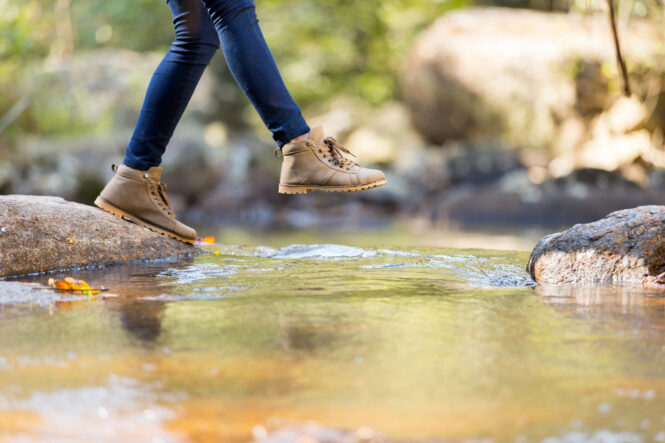It’s winter and much of the US is experiencing below average temperatures. Your game plan for getting through the long, cold days is to train for spring road races, maybe even the Boston Marathon. But the cold weather can aggravate joint pain and you’ve just been diagnosed with osteoarthritis in your knees. You fear that’s the end for your favorite past-time.
Contrary to what you may have heard, running, although a high-impact activity, does not always aggravate osteoarthritis, according to research (age is the biggest risk factor for developing osteoarthritis). However, it’s still important to be mindful of how you exercise so your joints stay as healthy as possible. Let’s take a look at some winter running tips:
Build up your mileage slowly. Leave yourself plenty of time for training. Your cardiovascular system can often become conditioned faster than your musculoskeletal system, but resist the urge to ramp up the miles too quickly. Beginners should start out walking, then gradually build in intervals of running. Listen to your body if you start feeling pain and adjust your training accordingly.
Don’t skip strength training. Strong muscles alleviate the stress on your joints. Runners especially need strong cores, in fact research shows that core weakness is one of the main risk factors for lower extremity overuse injuries such as stress fractures and knee pain. So make crunches and planks part of your regular routine.
Mix it up with cross-training and rest days. Cross-country skiing and skating are good complements to running, if you want to keep it outdoors. Good indoor activities include spinning, water aerobics, yoga, and of course, weight training. They keep things interesting by adding variety to your workout and help prevent overuse injuries. Don’t forget to take at least a day off a week to rest your joints and muscles.
Pay attention to the surface. The softer your running surface, the less the impact on your joints. Running on packed snow, as long as it’s not icy, is kind to your joints.
Your running shoes matter a lot. Certain running shoes are better for certain joint problems. Take a look at some recommendations here.
The cold, of course, adds a whole other dimension to an outdoor winter workout. Dressing in layers is important. Check out other cold weather tips for people with joint pain here.
Finally, even people with a joint replacement can enjoy running if they rehabilitate their joint properly. Read Terri Tibb’s inspiring story.
A joint specialist is a great resource for creating a training regimen that’s right for you. Use our Find a Doctor tool to find one in your area.




